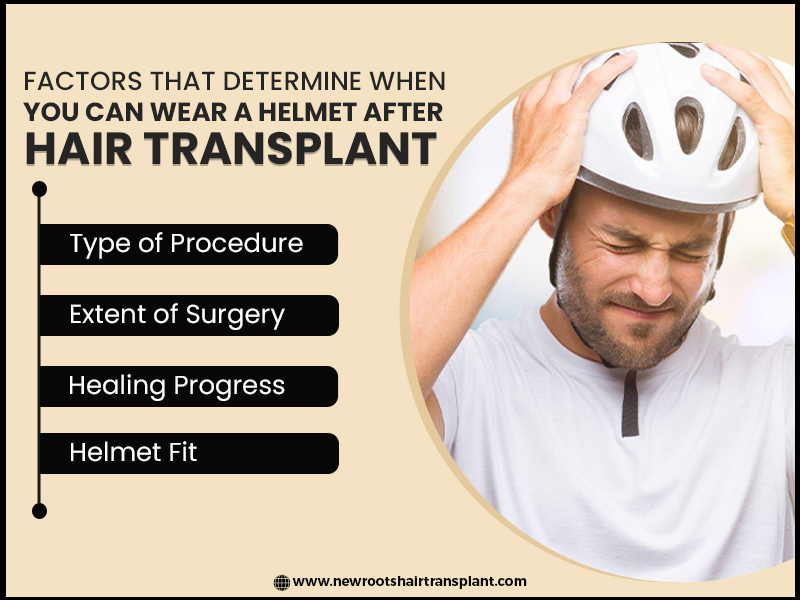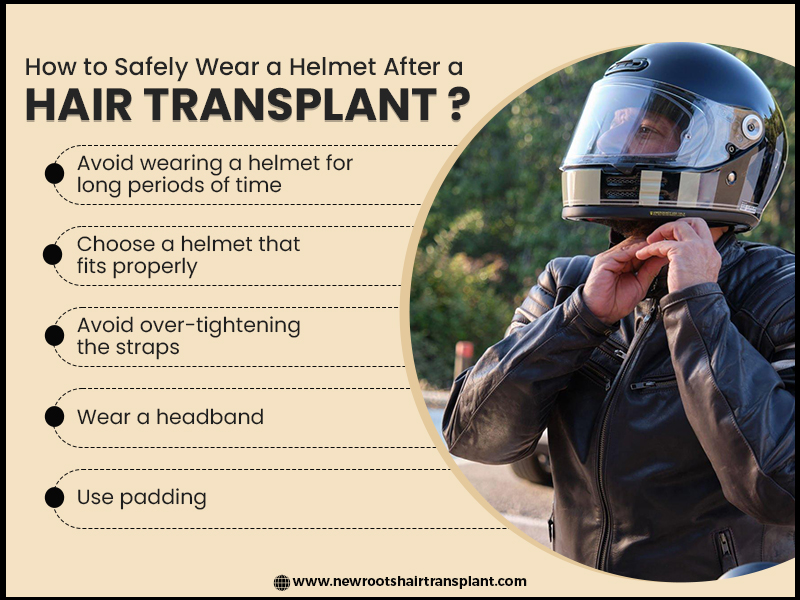
If you've recently undergone a Hair transplant in India, you may be wondering when it's safe to wear a helmet again.
Wearing a helmet is essential for safety when cycling, motorcycling, or engaging in contact sports, but you don't want to spoil the results of your hair transplant.
In this article, we'll cover everything you need to know about wearing a helmet after a hair transplant.

A hair transplant surgery extracts follicles from the donor site and transplants them into the recipient site; thus the scalp is exceedingly delicate after the surgery and needs to be handled with care during the first week following the procedure.
By doing so, your risk of catching an infection or developing some complication during the period of recovery decreases appreciably.
Wearing a helmet can put pressure on the scalp, which can be problematic for individuals who have recently undergone hair transplant surgery.
The pressure can cause the newly transplanted hair follicles to become dislodged or damaged, which can lead to suboptimal results.
Additionally, helmets can cause friction and irritation on the scalp, which can slow down the healing process and increase the risk of infection.
The amount of time you should wait before wearing a helmet after a hair transplant depends on a variety of factors, including the type of procedure you had and the extent of your surgery.
Generally, most surgeons recommend waiting at least 2 weeks before wearing a helmet.
However, it's important to note that every patient is different, and some may need to wait longer before wearing a helmet.
Your surgeon will provide you with specific instructions based on your unique situation.
Read More : 8 BENEFITS OF USING DERMA ROLLER FOR HAIR GROWTH

Several factors can affect when it's safe to wear a helmet after a hair transplant, including:
FUE patients may be able to wear a helmet sooner than FUT patients, as there is less trauma to the scalp with FUE.
Patients who have had larger hair transplant procedures may need to wait longer before wearing a helmet.
Your surgeon will monitor your healing progress to determine when it's safe to wear a helmet.
A poorly fitting helmet can put more pressure on the scalp, so it's important to make sure your helmet fits properly.
Read More : HEAD WASH AFTER HAIR TRANSPLANT: ESSENTIAL TIPS FOR OPTIMAL RESULTS

When you're ready to start wearing a helmet again after your hair transplant surgery, it's important to take certain precautions to ensure that your new hair follicles are protected.
Here are some tips to follow :
A helmet that fits snugly, but not too tight, will provide the best protection for your scalp while also reducing the risk of dislodging hair follicles.
Make sure to measure your head and choose a helmet that corresponds with the measurements.
If your helmet is still too tight even after adjusting the straps, try adding extra padding to reduce the pressure on your scalp.
Tightening the straps too much can cause excessive pressure on your scalp, so make sure they're snug but not overly tight.
Wearing a headband under your helmet can help to reduce friction and irritation on the scalp.
If possible, take breaks during your activities to remove your helmet and allow your scalp to breathe.
In addition to avoiding wearing a helmet for a certain amount of time after your hair transplant surgery, there are other precautions you can take to protect your new hair follicles and ensure the best possible results :
Read More : BENEFITS OF PRP AFTER HAIR TRANSPLANT
No, it's not recommended to wear a helmet during the hair transplant recovery period. The scalp needs time to heal and wearing a helmet can put pressure on the scalp, leading to complications and suboptimal results.
It's best to avoid these activities for at least 2 weeks after your hair transplant surgery to allow your scalp to heal.
Wearing a helmet can potentially damage or dislodge hair follicles, so it's important to follow proper safety precautions and wait until your surgeon approves of wearing a helmet.
Your surgeon will provide specific instructions based on your individual situation, but most patients can resume normal activities within a few weeks to a month after their hair transplant surgery.
Your doctor will allow you to wear a helmet 4 weeks after your surgery.
For a week after the surgery, the scalp is extremely sensitive. Up to 3 to 4 weeks, the grafts are fragile, and if pressure is exerted over them, the transplanted hair will get damaged and there’s a likelihood that the grafts will fall off.
Wearing a helmet is important for safety in many activities, but it's important to take precautions after a hair transplant surgery to ensure that your new hair follicles are not damaged.
Waiting at least 2 weeks before wearing a helmet and following proper helmet-fitting and safety precautions can help protect your scalp and ensure the best possible results.